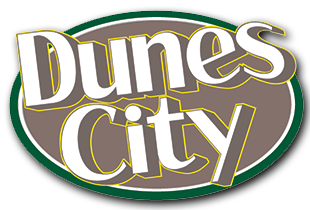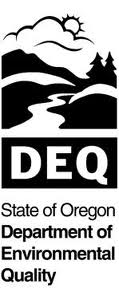City Permits, Forms and Information
New Home Builds FAQs
Dunes City Setback Requirements
Required Electrical Inspections
Exterior Wall Enhanced Drainage
NW Code Additional Energy Options
ORSC Wind and Seismic References
Dunes City Septic Setback Requirements
Manufactured Home FAQs
Coming soon
Dunes City Business License Application
Permits Sold Here
3. Demolition
4. Driveway (Call the office)
5. Electrical
7. Land Disturbance Permit 1 Acre (DEQ)
8. Land Division Form- Subdivision and Partition
9. Land Use/Property Line Adjustment
11. Mechanical
12. Plumbing
13. Property Owner/Construction Responsibility Form
14. Inspectors DEQ Septic -Approved List
15. Septic Land Use Compatibility Statement DEQ
16. Set Backs
18. Water
18a) Single Owner
18b) Transfer of Ownership
18c) Community System
18d) Vacant Property
20. Appeal to City Council Application
21. Business License Application
22. Renewable Energy
23. Right – Of – Way Permit Application for Vegetation and Tree Removal
24. Erosion and Sediment Control/Stormwater Management Permit Form
Outside Resources NW Code Professionals:
Ready Built Plans for decks, garages, stick built carport
Seismic/Wind/Snow load Requirements
Dunes City Information And Forms
![]() Download Information Forms as a PDF
Download Information Forms as a PDF
3. Dunes City Hall Rental Application
4. Complaint
6. Appointive Office (Volunteer) Application
7. Volunteer of the Year Nomination Form
8. Voter information – County Website
9. Election Information – State Website
10. Permit Administrator – Job Description
11. Planning Secretary – Job Description
12. Administrative Assistant – Job Description
Septic System Maintenance
“This information can save you time and money!”
Background
The most common wastewater treatment system used in rural areas is the septic tank soil absorption system. The septic tank removes solids from the wastewater, and the soil absorption field (drainfield) filters, treats and disposes of the septic tank effluent.
Removing the solids from the wastewater protects the drainfield from clogging and early failure. The septic tank also stores the settled solids and allows biological digestion of some of these solids.
How does a septic tank work?
The septic tank removes solids by holding wastewater in the tank, which allows the solids to settle and scum to rise to the top. Incoming water should be held in the tank for at least 24 hours in order to improve settling. Up to 50 percent of the solids will decompose into liquids and gases. The remaining solids accumulate in the tank.
Biological and chemical additives are not needed to aid or accelerate settling or decomposition. As a general rule, no solids other than human wastes and white toilet paper should be flushed.
As the septic system is used, sludge continues to accumulate in the bottom of the septic tank. Properly designed tanks have enough capacity for three to eight years use before needing service. The tank should be checked each year starting with the third year to determine how much sludge is there. It is important to understand the septic tanks always appear full because both the inlet and the outlet are at the top of the tank. The homeowner needs to determine how much of the tank’s volume is being taken up by solids, scum and sludge. When sludge and scum take up more than 35 percent of the tank volume, these solids need to be removed by pumping.
Servicing a septic tank
When too much sludge and scum are allowed to accumulate, the incoming sewage will not have enough time in the septic tank for solids to settle. Solids may flow to the drainfield and clog the drainfield, causing the sewage to overflow to the ground surface, where it exposes humans and animals to the disease-causing organisms in sewage. To prevent this from happening, it is very important to check the tank and have it serviced when needed.
The drainfield may not fail immediately when a full tank is not pumped. However, the septic tank is no longer protecting the drainfield from solids. This creates inefficiencies in the drainfield and may allow contamination of the groundwater. Continued neglect will result in failure of the drainfield, and it may need to be replaced.
The frequency of pumping depends on the size of the tank and what and how much goes down your drains. Use of a garbage disposal and excessive water use can increase pumping frequency.
In Oregon, a 1,000 gallon septic tank is used for homes with up to four bedrooms. If four people live in a four-bedroom house, a 1,000 gallon tank may need to be pumped approximately every three years. If the same system serves a family of two, the tank would be ready for pumping every six years. Systems installed before the current rules and regulations may have smaller septic tanks and may need to be pumped more often.
Cleaning the tank
A septic tank pumper licensed by the Department of Environmental Quality (DEQ) can pump and clean your tank. It is a good idea to supervise the cleaning to ensure that is done properly. The material pumped out is known as “septage.”
To get all of the material from the tank, the scum layer must be broken up and the sludge layers stirred up into the liquid portion of the tank. This is usually done by pumping liquid from the tank and reinjecting it into the bottom of the tank. The septic tank should be pumped out through the large central service hole. Not the sanitary tee or baffle inspection ports. Pumping out a tank through the inspection ports can cause damage.
Before closing the tank, check the condition of the tees or baffles. If they are missing or deteriorated, replace them with sanitary tees. Never enter a septic tank. Any work to replace the baffles or repair the tank should be made from the outside. The septic tank produces toxic gases which can kill a person in a matter of minutes. When working on a tank from the outside, make sure the area is well ventilated and someone is standing by. Never go into a septic tank to retrieve someone who was overcome by toxic gases or the lack of oxygen without a self-contained breathing apparatus. In the event someone falls into a septic tank the best thing to do is call for emergency service and put a fan at the top of the tank to blow in fresh air.
To facilitate cleaning and inspection, install a watertight riser and a gasket cover from the central service hole at least one inch above the surface before burying the tank. Do not bury the riser cover.
Additional information can be found at:
Oregon Department of Environmental Quality
Water Quality
Onsite Wastewater Management Program (Septic Systems)
What you should know about Septic Systems, Click here for more information.
or
Septic Tank Maintenance – Click here for more information
Water Quality
811 SW 6th Avenue
Portland, OR 97204
Phone: 503-229-5279
Toll Free: 800-452-4011
Fax: 503-229-5279
www.deq.state.or.us

